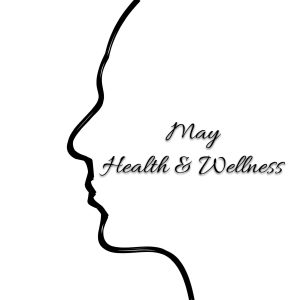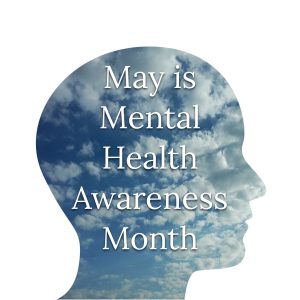


How to Navigate Loneliness
Loneliness is a type of sadness that happens when you feel disconnected from friends, family, and community. It often manifests as a feeling of isolation, even when you are surrounded by others. Loneliness can be especially challenging in mid-life, as it often intersects with career pressures, family responsibilities, and other life changes. Some of the common reasons behind feelings of loneliness can include career stress, personal loss, life transitions, and changes in social dynamics.
Human connection is vital for mental, emotional, and physical wellbeing. Supportive relationships reduce the risk of depression, anxiety, and many other mental health conditions. However, being alone is very different than feeling alone. For example, some people feel their best when they have more quiet time, while others need to have more interaction with others. That is why it is important to recognize when you may be feeling distant from others.
Here are some key signs that you may be experiencing loneliness:
• Feeling disconnected in social settings
• Experiencing a lack of meaningful conversations or interactions
• Perceiving that others do not understand or relate to you
• Spending more time alone than usual
• Feeling indifferent about social events you once enjoyed
If any of these sound familiar, consider completing an online assessment like a Loneliness Test to take a closer look.
To address loneliness effectively, be proactive. Seek professional support from a licensed therapist for help
navigating the underlying issues that may be contributing to your loneliness. To find a therapist, search for qualified professionals in your area through online directories or consult with your health plan to see which providers are covered. Many therapists also offer virtual sessions to provide more flexibility for your schedule. Additionally, employee assistance programs (EAPs), if provided by your employer, may offer additional services to support your mental and emotional wellbeing.
It is important to connect with resources as soon as you suspect you may be experiencing loneliness. By seeking professional support early, you can begin building a stronger foundation of positive connections that can support you when you need it most.
Coping with Grief
Grief is a profound and often overwhelming response to loss. Whether the loss stems from the death of a loved one, the end of a significant relationship, or another major life change, navigating grief can be a challenging journey. The grieving process involves a wide range of emotional and physical symptoms,
ranging from sadness to the inability to manage day-to-day tasks.
Common signs and symptoms of grief may include:
• Persistent sadness or emptiness
• Difficulty sleeping or sleeping too much
• Changes in appetite or weight
• Exhaustion or fatigue
• Difficulty concentrating or making decisions
• Irritability or intense anger
• Social withdrawal
Understanding the different types of grief can help you make sense of your experience. Types of grief include anticipatory grief, which occurs before a loss is imminent; normal grief, which follows the natural progression after a loss; and complicated grief, which may involve prolonged and intense mourning that interferes with daily functioning or health.
Some helpful coping strategies to manage grief include:
• Grace: Give yourself grace during your time of healing and remember that there is no right or wrong way to grieve.
• Humor: If it feels right for you, find humor in daily activities to boost your mood and lift your spirit.
• Self-care: Take care of your wellbeing through small acts of self-care. Wash your face, take a walk, or prepare a nourishing meal.
• Spirituality: Look to sources of personal meaning and emotional strength, whether through religious practices, meditation, or other forms of spiritual connection.
Grieving takes as long as it takes. While there is no set timeline for grieving, most individuals find the intensity of their grief lessens over time. However, it is important to be patient with yourself and recognize that grieving is a highly individual process. Sometimes grief can last for years. Talking with trusted friends and family who understand your situation can be beneficial for some people. Individual counseling, support groups, employee assistance programs, and other mental health resources can also offer hope and encouragement. Finding effective self-care strategies can help you cope with loss and move through the grieving process with grace.
Creating Mindful Moments
Mindful moments can change the way you experience your life. Being mindful means being self-aware and in tune with your surroundings. Embracing mindful moments can make a significant difference in your daily life, leading to greater satisfaction and resilience. Integrating mindfulness into your daily routines can also enhance your mental and physical health.
By creating mindful moments each day, you can experience a range of health benefits, like the following:
• Stress Reduction: Regular mindfulness practices can lower stress levels by promoting relaxation and reducing cortisol, a stress hormone.
• Improved Focus: Short breaks for mindfulness can enhance concentration and productivity, helping you
stay engaged with your tasks.
• Enhanced Emotional Wellbeing: Mindfulness can lead to a greater sense of emotional balance and resilience, improving your overall mood and outlook.
• Better Sleep Quality: Engaging in mindfulness activities before bedtime can improve sleep patterns and reduce insomnia.
• Reduced Physical Tension: By incorporating mindful practices, you can alleviate physical symptoms of stress, such as headaches and muscle tension.
To make mindfulness a part of your daily routine, set aside a few minutes each day for practices such as guided meditation or simple breathing exercises. Journaling can help you process your thoughts and feelings, while listening to soothing music can provide a much-needed mental break. Art therapy and doodling can help create a mind-body connection to the present moment. Single-tasking—the opposite of multi-tasking—can reduce anxiousness and overwhelm. By focusing on just one thing at a time, you can be more present in that moment. Listen more actively by reducing distractions when others are speaking to you. Giving your full attention will help strengthen your relationships by showing them you value their time. Mindfulness is not about achieving perfection; it is about creating moments of presence and awareness amidst your busy schedule.

Positive Energy Smoothie Bowl

Ingredients
• 1 frozen banana
• 1/2 cup mixed berries
• 1/4 cup spinach
• 1/4 cup Greek yogurt
• 1 tablespoon chia seeds
• 1/2 cup almond milk
• Toppings: sliced almonds, granola, shredded coconut
Instructions
1. Blend the frozen banana, mixed berries, spinach, Greek yogurt, chia seeds, and almond milk until smooth.
2. Pour the smoothie into a bowl and top with sliced almonds, granola, and shredded coconut.
3. Enjoy your positive energy smoothie bowl to kickstart your day!
